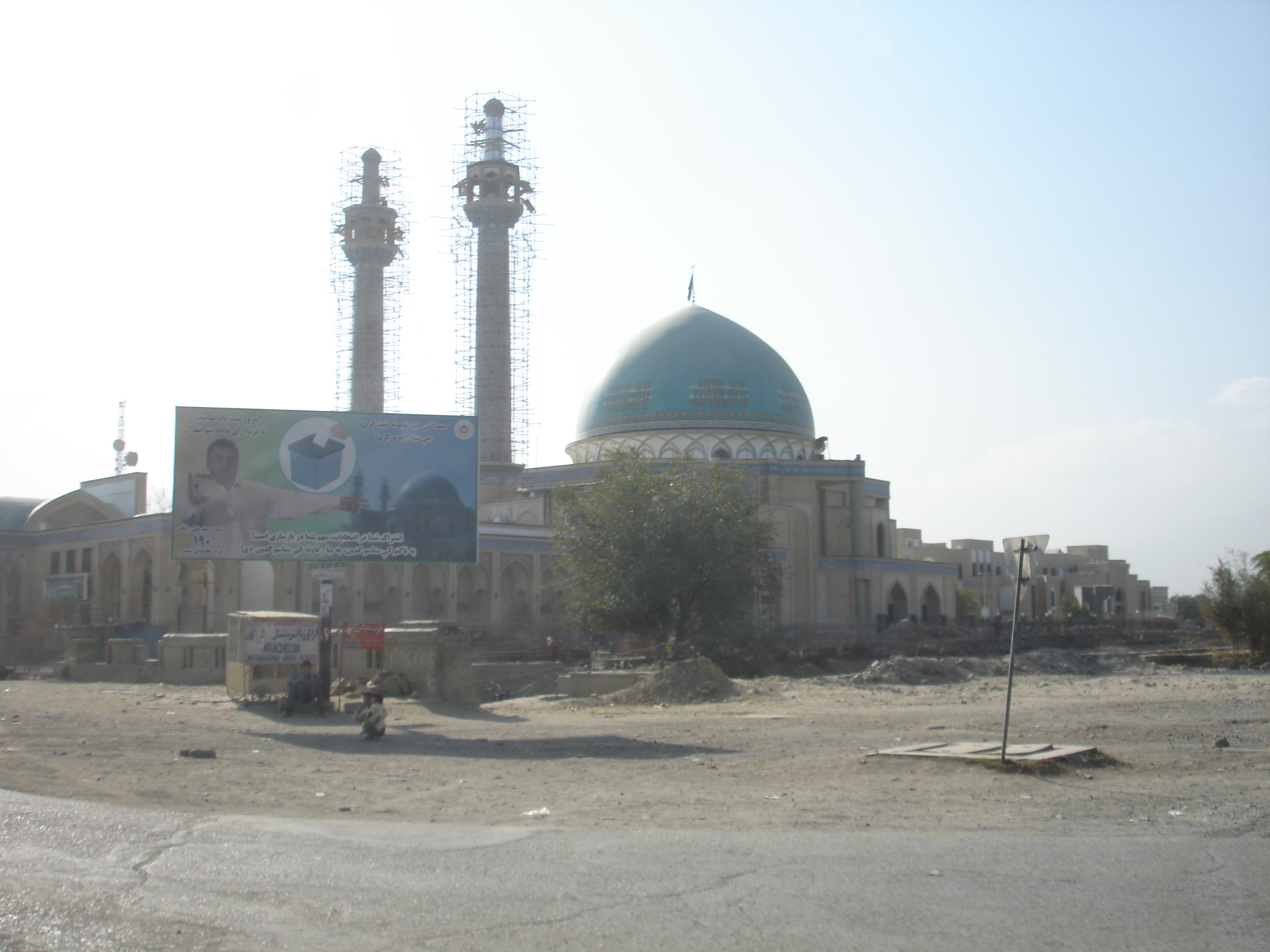Shi'a Islam in Afghanistan on:
[Wikipedia]
[Google]
[Amazon]

Afghan Shia News Agency
{{Asia topic, Shia Islam in

Shia Islam
Shīʿa Islam or Shīʿīsm is the second-largest branch of Islam. It holds that the Islamic prophet Muhammad designated ʿAlī ibn Abī Ṭālib as his successor (''khalīfa'') and the Imam (spiritual and political leader) after him, mos ...
in Afghanistan
Afghanistan, officially the Islamic Emirate of Afghanistan,; prs, امارت اسلامی افغانستان is a landlocked country located at the crossroads of Central Asia and South Asia. Referred to as the Heart of Asia, it is border ...
is practiced by a significant minority of the population
Population typically refers to the number of people in a single area, whether it be a city or town, region, country, continent, or the world. Governments typically quantify the size of the resident population within their jurisdiction using a ...
. According to a PEW 2021 survey, 7% of Afghans followed Shia Islam, but other estimates have put the number as high as 35%. Afghanistan's Shia are primarily the Twelver
Twelver Shīʿīsm ( ar, ٱثْنَا عَشَرِيَّة; '), also known as Imāmīyyah ( ar, إِمَامِيَّة), is the largest branch of Shīʿa Islam, comprising about 85 percent of all Shīʿa Muslims. The term ''Twelver'' refers t ...
s, while a minority are Ismaili
Isma'ilism ( ar, الإسماعيلية, al-ʾIsmāʿīlīyah) is a branch or sub-sect of Shia Islam. The Isma'ili () get their name from their acceptance of Imam Isma'il ibn Jafar as the appointed spiritual successor ( imām) to Ja'far al-S ...
s.
Twelvers
The majority of Afghanistan's Shia Muslim's are theTwelver
Twelver Shīʿīsm ( ar, ٱثْنَا عَشَرِيَّة; '), also known as Imāmīyyah ( ar, إِمَامِيَّة), is the largest branch of Shīʿa Islam, comprising about 85 percent of all Shīʿa Muslims. The term ''Twelver'' refers t ...
s, primarily of the Hazara ethnicity. The next-largest Twelvers are the Farsiwan of the western Herat
Herāt (; Persian: ) is an oasis city and the third-largest city of Afghanistan. In 2020, it had an estimated population of 574,276, and serves as the capital of Herat Province, situated south of the Paropamisus Mountains (''Selseleh-ye Safē ...
and Farah provinces. Other, far smaller, Afghanistan's Twelver communities include the Qizilbash
Qizilbash or Kizilbash ( az, Qızılbaş; ota, قزيل باش; fa, قزلباش, Qezelbāš; tr, Kızılbaş, lit=Red head ) were a diverse array of mainly Turkoman Shia militant groups that flourished in Iranian Azerbaijan, Anatolia, t ...
and the Sadat populations.
Ismailis
A smaller portion of Afghanistan's Shia areNizari
The Nizaris ( ar, النزاريون, al-Nizāriyyūn, fa, نزاریان, Nezāriyān) are the largest segment of the Ismaili Muslims, who are the second-largest branch of Shia Islam after the Twelvers. Nizari teachings emphasize independent ...
Ismaili
Isma'ilism ( ar, الإسماعيلية, al-ʾIsmāʿīlīyah) is a branch or sub-sect of Shia Islam. The Isma'ili () get their name from their acceptance of Imam Isma'il ibn Jafar as the appointed spiritual successor ( imām) to Ja'far al-S ...
s; these populations include many of the Pamir language speakers of the northeastern portion of the country (predominantly in Badakhshan Province
Badakhshan Province (Persian/ Uzbek: , ''Badaxšān'') is one of the 34 provinces of Afghanistan, located in the northeastern part of the country. It is bordered by Tajikistan's Gorno-Badakhshan in the north and the Pakistani regions of Lower ...
bordering Tajikistan
Tajikistan (, ; tg, Тоҷикистон, Tojikiston; russian: Таджикистан, Tadzhikistan), officially the Republic of Tajikistan ( tg, Ҷумҳурии Тоҷикистон, Jumhurii Tojikiston), is a landlocked country in Centr ...
).
Baghlan Province
Baghlan (Dari: ''Baġlān'') is one of the thirty-four provinces of Afghanistan. It is in the north of the country. As of 2020, the province has a population of about 1,014,634.
Its capital is Puli Khumri, but its name comes from the other maj ...
is also home to an Ismaili community, the Sayeds of Kayan. Their leader is Sayed Mansur Naderi and his son, Sayed Jaffar Naderi.Hindokosh, May 2003. Cited in During the Soviet–Afghan War
The Soviet–Afghan War was a protracted armed conflict fought in the Democratic Republic of Afghanistan from 1979 to 1989. It saw extensive fighting between the Soviet Union and the Afghan mujahideen (alongside smaller groups of anti-Soviet ...
, about 10,000 Ismaili militiamen defended the Baghlan Ismaili stronghold of Kayan. They struck a deal with the Soviets
Soviet people ( rus, сове́тский наро́д, r=sovyétsky naród), or citizens of the USSR ( rus, гра́ждане СССР, grázhdanye SSSR), was an umbrella demonym for the population of the Soviet Union.
Nationality policy in th ...
in not attacking them, but logistically supported the Mujahideen
''Mujahideen'', or ''Mujahidin'' ( ar, مُجَاهِدِين, mujāhidīn), is the plural form of ''mujahid'' ( ar, مجاهد, mujāhid, strugglers or strivers or justice, right conduct, Godly rule, etc. doers of jihād), an Arabic term t ...
. In 2003 it was reported that unlike other Ismaili communities in the region and worldwide, the Baghlan Ismailis did not defer to the spiritual leader of Ismailis worldwide, the Aga Khan
Aga Khan ( fa, آقاخان, ar, آغا خان; also transliterated as ''Aqa Khan'' and ''Agha Khan'') is a title held by the Imām of the Nizari Ismāʿīli Shias. Since 1957, the holder of the title has been the 49th Imām, Prince Shah Kari ...
.
See also
*Islam in Afghanistan
Islam in Afghanistan began to be practiced after the Arab Islamic conquest of Afghanistan from the 7th to the 10th centuries, with the last holdouts to conversion submitting in the late 19th century. It was generally accepted by local communitie ...
* Religion in Afghanistan
*Islamic conquest of Afghanistan
The Muslim conquests of Afghanistan began during the Muslim conquest of Persia as the Arab Muslims migrated eastwards to Khorasan, Sistan and Transoxiana. Fifteen years after the Battle of Nahāvand in 642 AD, they controlled all Sasanian doma ...
References
External links
Afghan Shia News Agency
{{Asia topic, Shia Islam in